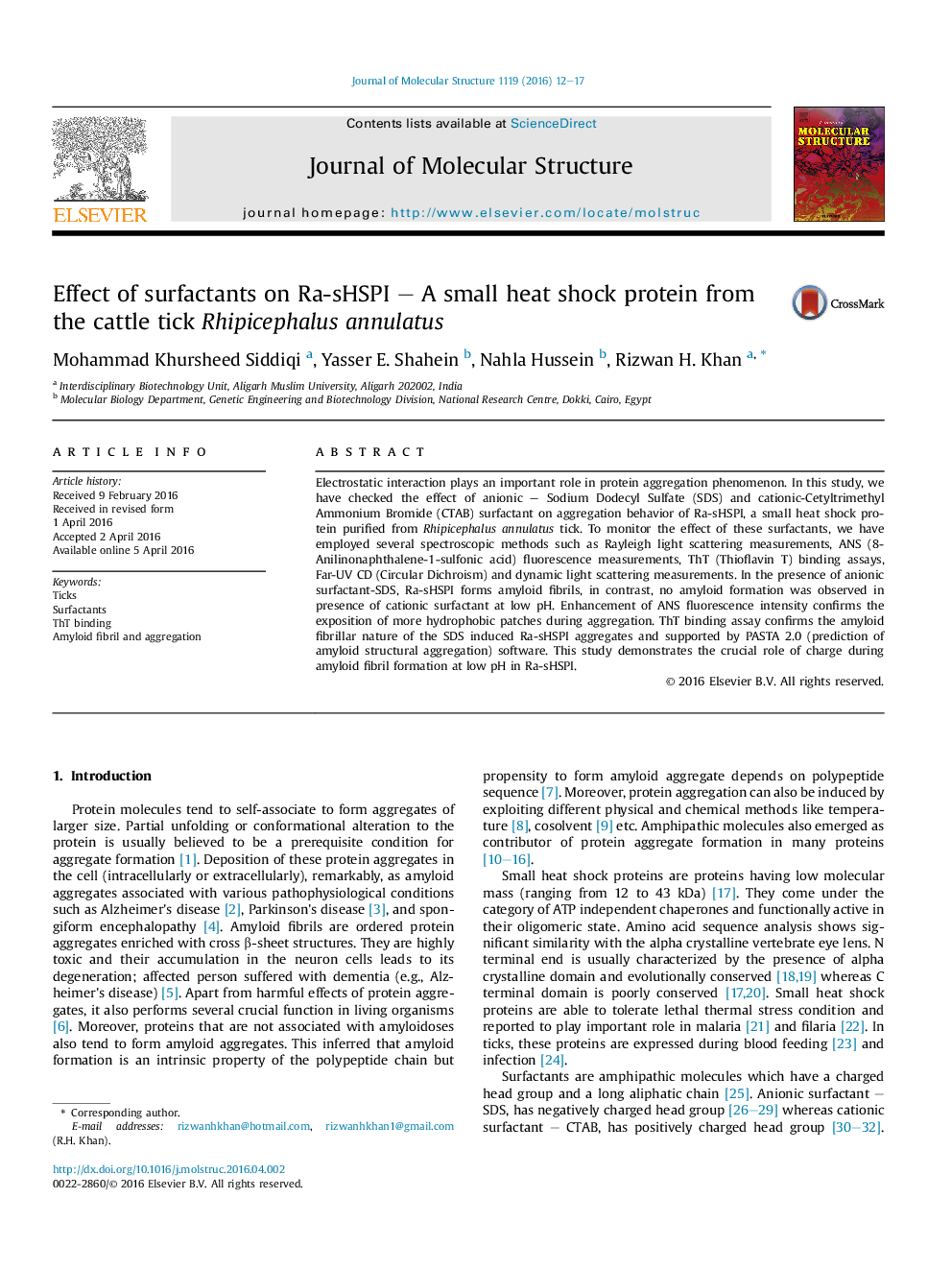| Article ID | Journal | Published Year | Pages | File Type |
|---|---|---|---|---|
| 1404760 | Journal of Molecular Structure | 2016 | 6 Pages |
•Effect of surfactants (anionic as well as cationic) on Ra-sHSPI protein (from Rhipicephalus annulatus) was studied.•Anionic surfactant induces the formation of amyloid aggregate whereas CTAB is unable to induce.•ThT fluorescence intensity was more prominent in presence of SDS as compared to the CTAB.•Structure with more beta sheet content was formed in the presence of SDS as revealed by circular dichroism study.
Electrostatic interaction plays an important role in protein aggregation phenomenon. In this study, we have checked the effect of anionic – Sodium Dodecyl Sulfate (SDS) and cationic-Cetyltrimethyl Ammonium Bromide (CTAB) surfactant on aggregation behavior of Ra-sHSPI, a small heat shock protein purified from Rhipicephalus annulatus tick. To monitor the effect of these surfactants, we have employed several spectroscopic methods such as Rayleigh light scattering measurements, ANS (8-Anilinonaphthalene-1-sulfonic acid) fluorescence measurements, ThT (Thioflavin T) binding assays, Far-UV CD (Circular Dichroism) and dynamic light scattering measurements. In the presence of anionic surfactant-SDS, Ra-sHSPI forms amyloid fibrils, in contrast, no amyloid formation was observed in presence of cationic surfactant at low pH. Enhancement of ANS fluorescence intensity confirms the exposition of more hydrophobic patches during aggregation. ThT binding assay confirms the amyloid fibrillar nature of the SDS induced Ra-sHSPI aggregates and supported by PASTA 2.0 (prediction of amyloid structural aggregation) software. This study demonstrates the crucial role of charge during amyloid fibril formation at low pH in Ra-sHSPI.
Graphical abstractFigure optionsDownload full-size imageDownload as PowerPoint slide
